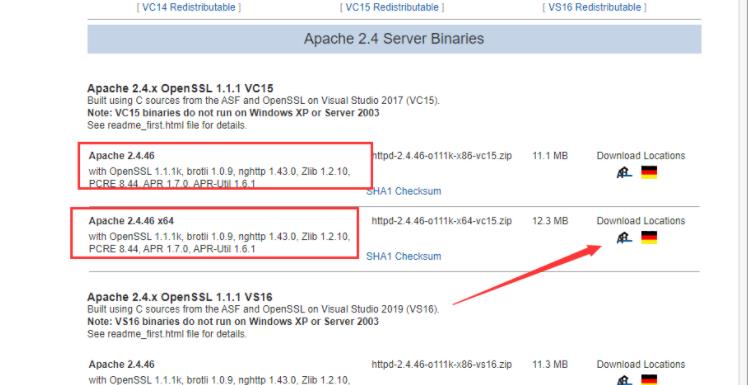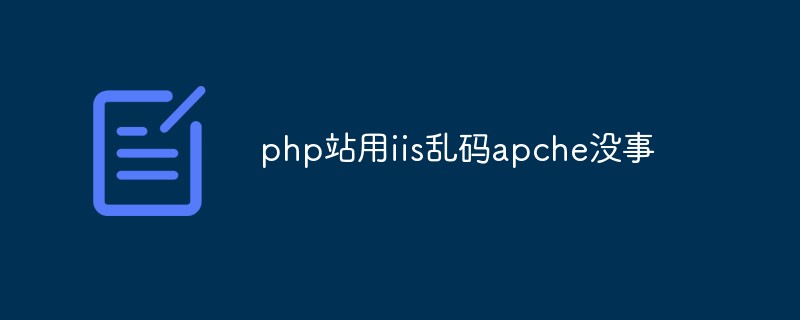 Backend Development
Backend Development PHP Tutorial
PHP Tutorial How to implement apache php gzip compressed output, apachegzip_PHP tutorial
How to implement apache php gzip compressed output, apachegzip_PHP tutorialApache php gzip compression output implementation method, apachegzip
1. Introduction to gzip
gzip is the abbreviation of GNU zip. It is a GNU free software file compression program and is often used to represent the file format gzip. The authors of the software are Jean-loup Gailly and Mark Adler. It was first publicly released on October 31, 1992. The version number is 0.1. The current stable version is 1.2.4.
Gzip is mainly used for file compression in Unix systems. We often use files with the suffix .gz in Linux, and they are in GZIP format. Nowadays, it has become a very common data compression format, or file format, used on the Internet. When applying Gzip compression to a plain text file, the effect is very obvious. After GZIP compression, the page size can become 40% or less of the original size, depending on the content of the file.
GZIP encoding over HTTP protocol is a technology used to improve the performance of WEB applications. In web development, you can use gzip to compress pages to reduce website traffic. However, gzip does not occupy a lot of CPU. The increase is only a few percentage points, but it can compress pages by more than 30%, which is very cost-effective.
Using the Gzip module in Apache, we can use the Gzip compression algorithm to compress the web page content published by the Apache server and then transmit it to the client browser. This compression actually reduces the number of bytes transmitted over the network (saving network I/O for transmission). The most obvious benefit is that it can speed up the loading of web pages.
The benefits of faster web page loading are self-evident. In addition to saving traffic and improving the user's browsing experience, another potential benefit is that Gzip has a better relationship with search engine crawlers. For example, Google can crawl web pages faster than ordinary manual crawling by reading gzip files directly. In Google Webmaster Tools you can see that sitemap.xml.gz is submitted directly as a Sitemap.
And these benefits are not limited to static content, PHP dynamic pages and other dynamically generated content can be compressed by using the Apache compression module, coupled with other performance adjustment mechanisms and corresponding server-side caching rules, this can be greatly improved Website performance. Therefore, for PHP programs deployed on Linux servers, we recommend that you enable Gzip Web compression if the server supports it.
2. The process of Web server processing HTTP compression is as follows:
1. After receiving the HTTP request from the browser, the web server checks whether the browser supports HTTP compression (Accept-Encoding information);
2. If the browser supports HTTP compression, the web server checks the suffix of the requested file;
3. If the requested file is a static file such as HTML, CSS, etc., the web server will check whether the latest compressed file of the requested file already exists in the compression buffer directory;
4. If the compressed file of the requested file does not exist, the web server returns the uncompressed requested file to the browser and stores the compressed file of the requested file in the compression buffer directory;
5. If the latest compressed file of the requested file already exists, the compressed file of the requested file will be returned directly;
6. If the requested file is a dynamic file, the web server dynamically compresses the content and returns it to the browser. The compressed content is not stored in the compression cache directory.
3. Enable apache’s gzip function
There are two modules on Apache that use the Gzip compression algorithm for compression: mod_gzip and mod_deflate. To use Gzip web compression, first make sure your server has support for one of these two components.
Although using Gzip also requires the support of the client browser, don't worry, most browsers currently support Gzip, such as IE, Mozilla Firefox, Opera, Chrome, etc.
By looking at the HTTP header, we can quickly determine whether the client browser used supports gzip compression. If the following information appears in the sent HTTP header, it means that your browser supports the corresponding gzip compression:
The code is as follows:Accept-Encoding: gzip supports mod_gzip
Accept-Encoding: deflate supports mod_deflate
Accept-Encoding: gzip,deflate supports both mod_gzip and mod_deflate
View with firebug:

Accept-Encoding: gzip,deflate supports both mod_gzip and mod_deflate
If the server enables support for the Gzip component, then we can customize it in http.conf or .htaccess. The following is a simple example of .htaccess configuration:
mod_gzip configuration:
The code is as follows:
# mod_gzip: pl)$mod_gzip_item_include handler ^cgi-script$
mod_gzip_item_include mime ^text/.*
mod_gzip_item_include mime ^application/x-javascript.*
mod_gzip_item_exclude rspheader ^Content-Encoding:.*gzip.*
Configuration example of mod_deflate:
Open
will
#LoadModule deflate_module modules/mod_deflate.so
#LoadModule headers_module modules/mod_headers.so
Remove the # sign at the beginning
The code is as follows:
# mod_deflate:
AddOutputFilterByType DEFLATE text/html
AddOutputFilterByType DEFLATE text/xml
AddOutputFilterByType DEFLATE text/css
AddOutputFilterByType DEFLATE text/javascript
AddOutputFilterByType DEFLATE application/xhtml xml
AddOutputFilterByType DEFLATE application/xml
AddOutputFilterByType DEFLATE application/rss xml
AddOutputFilterByType DEFLATE application/atom_xml
AddOutputFilterByType DEFLATE application/x-javascript
AddOutputFilterByType DEFLATE application/x-httpd-php
AddOutputFilterByType DEFLATE image/svg xml
ri
The following file MIME types can be added according to your own situation. As for PDF
, pictures, music documents and the like are already highly compressed formats. Repeated compression has little effect. On the contrary, it may reduce performance by increasing CPU processing time and browser rendering problems. So there is no need
To be compressed again via Gzip. After passing the above settings, check the returned HTTP header. If the following information appears, it means that the returned data has been compressed. That is, the Gzip compression configured in the website program has taken effect.
firebug view:
Content-Encoding: gzip
 Note:
Note:
1) Regardless of using mod_gzip or mod_deflate, the information returned here is the same. Because they all implement gzip compression.
2) CompressionLevel 9 refers to the level of compression (setting the compression ratio). The value ranges from 1 to 9, with 9 being the highest level. It is understood that this can reduce the size of the transfer by up to 80% (depending on the file content), and can save at least half. CompressionLevel can be set to a value of 6 by default to maintain a balance between processor performance and web page compression quality. It is not recommended to set it too high. If it is set to a high level, although it will have a high compression rate, it will take up more CPU resources.
3) There is no need to compress image formats such as jpg, music files such as mp3, and compressed files such as zip that have already been compressed.
4. What are the main differences between mod_gzip and mod_deflate? Which one is better to use?
The first difference is the version of the Apache web server in which they are installed:
The Apache 1.x
series does not have built-in web page compression technology, so an additional third-party mod_gzip module is used to perform compression. WhenApache 2.x was officially developed, web page compression was taken into consideration and the mod_deflate module was built-in to replace mod_gzip. Although both use the Gzip compression algorithm, their operating principles are similar. The second difference is the compression quality:
mod_deflate has a slightly faster compression speed and mod_gzip has a slightly higher compression ratio. Generally, by default, mod_gzip will achieve 4% to 6% more compression than mod_deflate. So, why use mod_deflate?
The third difference is the occupation of server resources:
Generally speaking, mod_gzip consumes a higher amount of server CPU. mod_deflate It is a compression module specially used to ensure the performance of the server, mod_deflate Less resources are required to compress files. This means that on a high-traffic server, using mod_deflate may load faster than mod_gzip.
Don’t quite understand? In short, if your website has less than 1,000 unique visitors per day and you want to speed up the loading of web pages, use mod_gzip. Although it will consume some additional server resources, But it's worth it. If your website has more than 1,000 unique visitors per day and is using a shared virtual host with limited allocated system resources, use mod_deflate will be a better choice.
In addition, starting from Apache 2.0.45, mod_deflate can use DeflateCompressionLevel directive to set the compression level. The value of this directive can be an integer between 1 (fastest compression, lowest compression quality) to 9 (slowest compression, highest compression ratio). Its default value is 6 (compression speed and compression quality). a more balanced value). This simple change makes mod_deflate easily comparable to mod_gzip's compression.
P.S. For virtual spaces that do not have the above two Gzip modules enabled, you can also use PHP's zlib function library (you also need to check whether the server supports it) to compress files, but this method is more troublesome to use, and It generally consumes server resources, so please use it with caution according to the situation.
5. zlib.output_compression and ob_gzhandler encoding compression
The server does not support mod_gzip and mod_deflate modules. If you want to compress web page content through GZIP, you can consider two methods. Enable zlib.output_compression or encode through ob_gzhandler .
1) zlib.output_compression compresses the web content and sends data to the client at the same time.
2) ob_gzhandler waits for the web page content to be compressed before sending it. Compared with the former, it is more efficient. However, it should be noted that the two cannot be used at the same time. You can only choose one, otherwise an error will occur.
A brief description of the implementation of the two:
1. zlib.output_compression implementation
By default, zlib.output_compression is off:
The code is as follows:; Transparent output compression using the zlib library
; Valid values for this option are 'off', 'on', or a specific buffer size
; to be used for compression (default is 4KB)
; Note: Resulting chunk size may vary due to nature of compression. PHP
; outputs chunks that are few hundreds bytes each as a result of
; compression. If you prefer a larger chunk size for better
; Performance, enable output_buffering in addition.
; Note: You need to use zlib.output_handler instead of the standard
; output_handler, or otherwise the output will be corrupted.
; http://php.net /zlib.output-compression
zlib.output_compression = Off
; http://php.net/zlib.output-compression-level
;zlib.output_compression_level = -1
If you need to edit the php.ini file to open it, add the following content:
zlib.output_compression = On
zlib.output_compression_level = 6
You can check the result through the phpinfo() function.
When the Local of zlib.output_compression
When the values of Value and MasterValue are both On, it means that it has taken effect. The PHP page (including pseudo-static page) visited at this time has been GZIP compressed. Through Firebug or
The online web page GZIP compression detection tool can detect the compression effect.
2. Implementation of ob_gzhandler
If you need to use ob_gzhandler, you need to turn off zlib.output_compression and change the content of the php.ini file to:
zlib.output_compression = Off
zlib.output_compression_level = -1
By inserting in the PHP file Related code implements GZIP compression P compression:
if (extension_loaded('zlib')) {
if ( !headers_sent() AND isset($_SERVER['HTTP_ACCEPT_ENCODING']) &&
strpos($_SERVER['HTTP_ACCEPT_ENCODING'], 'g zip' ) == False)
// Pages are not output and the browser can accept the page of gzip
{
OB_START ('OB_GZHANDLER'); Compressed content
echo $context;
ob_end_flush();
No matter it is zlib.output_compression or ob_gzhandler, it can only perform GZIP compression on PHP files. For static files such as HTML, CSS, JS etc. Files can only be implemented by calling PHP.
The last thing I want to say is that the mainstream browsers now use the HTTP1.1 protocol by default.
All support GZIP compression. For IE, if you do not select its menu bar Tools-"Internet Options-"Advanced-"HTTP 1.1 Settings-"Use HTTP
1.1, then you will not feel the pleasure brought by the speed increase after web page compression!
http://www.bkjia.com/PHPjc/1056839.html
 图文详解apache2.4+php8.0的安装配置方法Dec 06, 2022 pm 04:53 PM
图文详解apache2.4+php8.0的安装配置方法Dec 06, 2022 pm 04:53 PM本文给大家介绍如何安装apache2.4,以及如何配置php8.0,文中附有图文详细步骤,下面就带大家一起看看怎么安装配置apache2.4+php8.0吧~
 Linux apache怎么限制并发连接和下载速度May 12, 2023 am 10:49 AM
Linux apache怎么限制并发连接和下载速度May 12, 2023 am 10:49 AMmod_limitipconn,这个是apache的一个非官方模块,根据同一个来源ip进行并发连接控制,bw_mod,它可以根据来源ip进行带宽限制,它们都是apache的第三方模块。1.下载:wgetwget2.安装#tar-zxvfmod_limitipconn-0.22.tar.gz#cdmod_limitipconn-0.22#vimakefile修改:apxs=“/usr/local/apache2/bin/apxs”#这里是自己apache的apxs路径,加载模块或者#/usr/lo
 apache版本怎么查看?Jun 14, 2019 pm 02:40 PM
apache版本怎么查看?Jun 14, 2019 pm 02:40 PM查看apache版本的步骤:1、进入cmd命令窗口;2、使用cd命令切换到Apache的bin目录下,语法“cd bin目录路径”;3、执行“httpd -v”命令来查询版本信息,在输出结果中即可查看apache版本号。
 超细!Ubuntu20.04安装Apache+PHP8环境Mar 21, 2023 pm 03:26 PM
超细!Ubuntu20.04安装Apache+PHP8环境Mar 21, 2023 pm 03:26 PM本篇文章给大家带来了关于PHP的相关知识,其中主要跟大家分享在Ubuntu20.04 LTS环境下安装Apache的全过程,并且针对其中可能出现的一些坑也会提供解决方案,感兴趣的朋友下面一起来看一下吧,希望对大家有帮助。
 nginx,tomcat,apache的区别是什么May 15, 2023 pm 01:40 PM
nginx,tomcat,apache的区别是什么May 15, 2023 pm 01:40 PM1.Nginx和tomcat的区别nginx常用做静态内容服务和代理服务器,直接外来请求转发给后面的应用服务器(tomcat,Django等),tomcat更多用来做一个应用容器,让javawebapp泡在里面的东西。严格意义上来讲,Apache和nginx应该叫做HTTPServer,而tomcat是一个ApplicationServer是一个Servlet/JSO应用的容器。客户端通过HTTPServer访问服务器上存储的资源(HTML文件,图片文件等),HTTPServer是中只是把服务器
 php站用iis乱码而apache没事怎么解决Mar 23, 2023 pm 02:48 PM
php站用iis乱码而apache没事怎么解决Mar 23, 2023 pm 02:48 PM在使用 PHP 进行网站开发时,你可能会遇到字符编码问题。特别是在使用不同的 Web 服务器时,会发现 IIS 和 Apache 处理字符编码的方法不同。当你使用 IIS 时,可能会发现在使用 UTF-8 编码时出现了乱码现象;而在使用 Apache 时,一切正常,没有出现任何问题。这种情况应该怎么解决呢?
 如何在 RHEL 9/8 上设置高可用性 Apache(HTTP)集群Jun 09, 2023 pm 06:20 PM
如何在 RHEL 9/8 上设置高可用性 Apache(HTTP)集群Jun 09, 2023 pm 06:20 PMPacemaker是适用于类Linux操作系统的高可用性集群软件。Pacemaker被称为“集群资源管理器”,它通过在集群节点之间进行资源故障转移来提供集群资源的最大可用性。Pacemaker使用Corosync进行集群组件之间的心跳和内部通信,Corosync还负责集群中的投票选举(Quorum)。先决条件在我们开始之前,请确保你拥有以下内容:两台RHEL9/8服务器RedHat订阅或本地配置的仓库通过SSH访问两台服务器root或sudo权限互联网连接实验室详情:服务器1:node1.exa
 Linux下如何查看nginx、apache、mysql和php的编译参数May 14, 2023 pm 10:22 PM
Linux下如何查看nginx、apache、mysql和php的编译参数May 14, 2023 pm 10:22 PM快速查看服务器软件的编译参数:1、nginx编译参数:your_nginx_dir/sbin/nginx-v2、apache编译参数:catyour_apache_dir/build/config.nice3、php编译参数:your_php_dir/bin/php-i|grepconfigure4、mysql编译参数:catyour_mysql_dir/bin/mysqlbug|grepconfigure以下是完整的实操例子:查看获取nginx的编译参数:[root@www~]#/usr/lo


Hot AI Tools

Undresser.AI Undress
AI-powered app for creating realistic nude photos

AI Clothes Remover
Online AI tool for removing clothes from photos.

Undress AI Tool
Undress images for free

Clothoff.io
AI clothes remover

AI Hentai Generator
Generate AI Hentai for free.

Hot Article

Hot Tools

EditPlus Chinese cracked version
Small size, syntax highlighting, does not support code prompt function

SublimeText3 Linux new version
SublimeText3 Linux latest version

ZendStudio 13.5.1 Mac
Powerful PHP integrated development environment

Notepad++7.3.1
Easy-to-use and free code editor

SublimeText3 English version
Recommended: Win version, supports code prompts!






